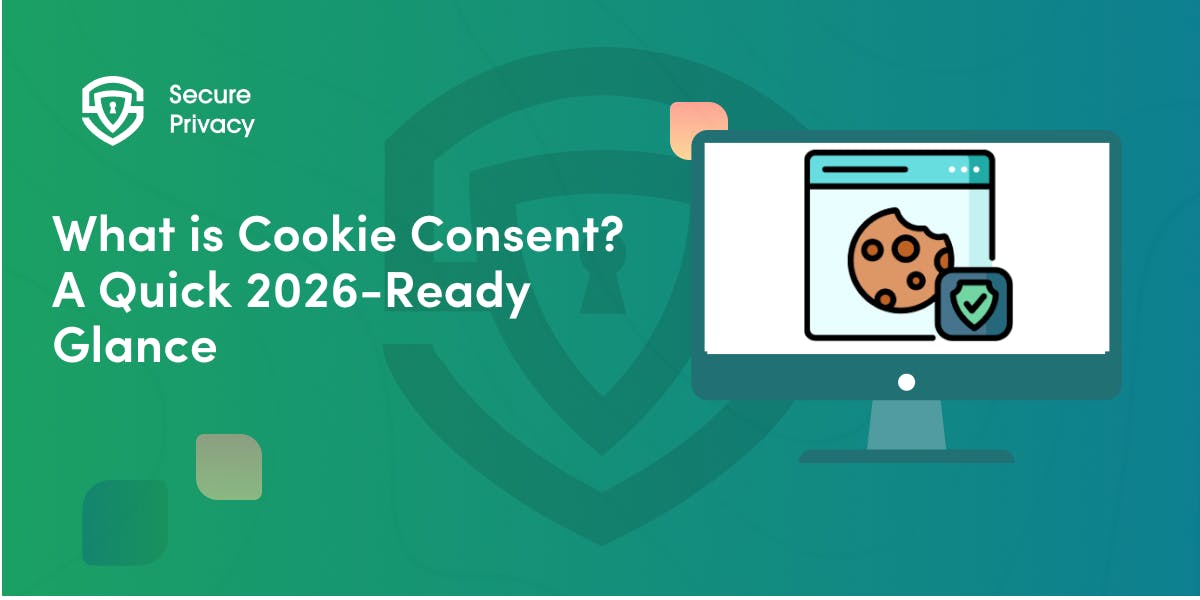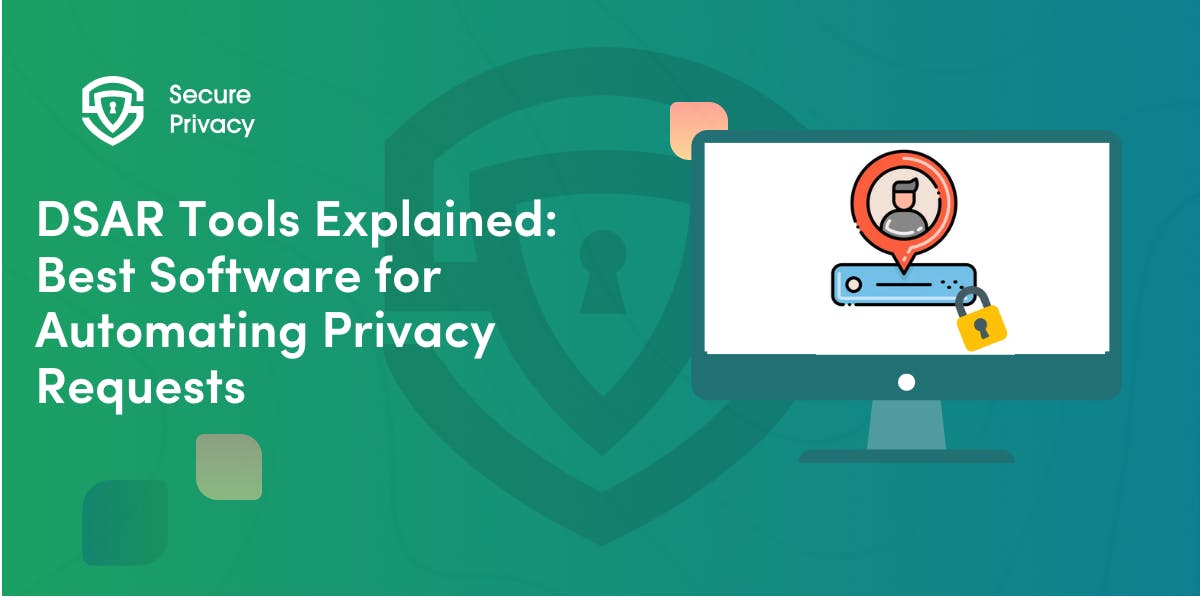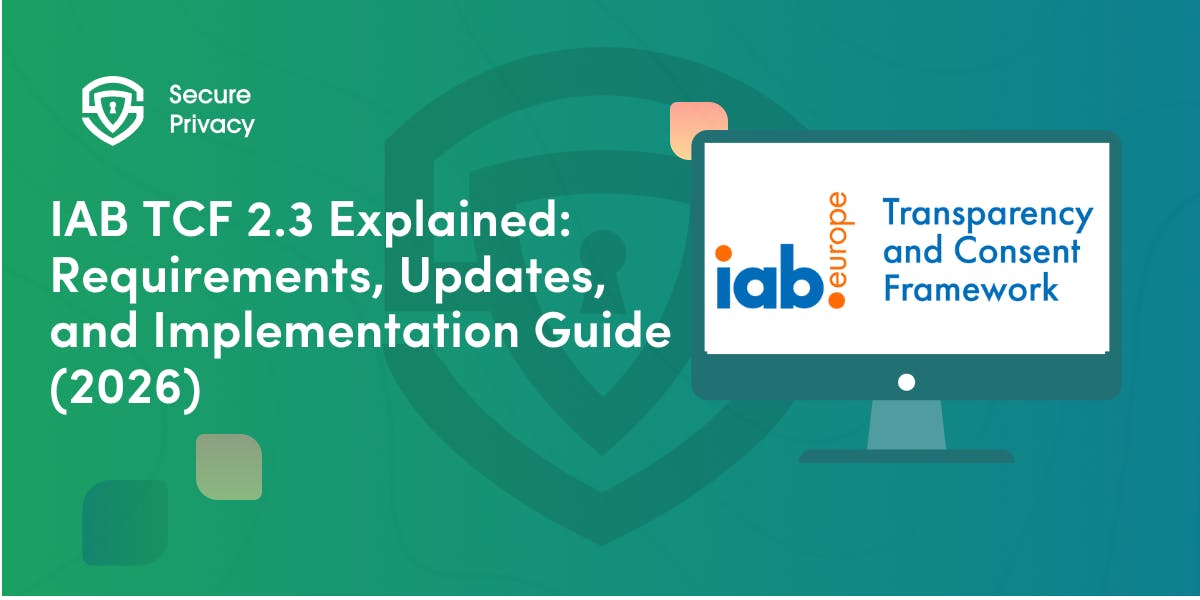Policy Consent Management: What It Is and Why It Matters
Your privacy compliance strategy is incomplete without proper consent management systems. While most businesses focus on cookie banners and basic consent collection, they're missing a critical component that regulators increasingly scrutinize: documented proof of user agreement to privacy policies, terms of service, and legal agreements.
In 2026, manual consent tracking exposes organizations to significant regulatory penalties and operational inefficiencies. Privacy policy consent requirements have evolved from simple checkboxes to comprehensive documentation systems that must prove valid consent was obtained, stored, and managed according to strict legal standards.
In this guide, you'll learn what policy consent management encompasses, why traditional methods fall short, and how automation transforms compliance from a liability into a competitive advantage.
Understanding Policy Consent vs Cookie Consent
Policy consent management extends beyond cookie banners to encompass user agreement to all legal documents and data processing activities. While cookie consent focuses on tracking technologies, policy consent covers the broader spectrum of user agreements that govern business relationships.
What Requires Policy Consent
Privacy policies require explicit user acknowledgment under GDPR, CCPA, and similar regulations. Users must actively agree to data collection, processing, and sharing practices described in privacy policies rather than simply browsing websites.
Terms and conditions consent establishes contractual relationships between businesses and users. These agreements require documented acceptance to be legally enforceable and protect business interests from misuse or disputes.
Data processing agreements in B2B contexts need formal consent documentation. When businesses process personal data on behalf of clients, documented consent from data subjects becomes a shared compliance responsibility.
Active vs Passive Consent
Traditional "browsing equals agreement" approaches no longer meet GDPR standards. Legal consent tracking requires affirmative action from users, such as clicking acceptance buttons or checking boxes that clearly indicate agreement to specific terms.
Passive consent through continued website use fails GDPR's "unambiguous" consent requirements (which integrate with a broader Privacy by design framework). Users must take positive action that demonstrates they understand and agree to the policies governing their data.
When Policy Consent Becomes Legally Required
GDPR Policy Consent requirements apply when processing personal data requires user consent as the lawful basis. Article 6 and 7 establish specific situations where documented consent becomes mandatory rather than optional.
GDPR Requirements for Valid Consent
Under GDPR, valid consent must be freely given without coercion, allowing users genuine choice and control. Users must be able to refuse consent without detriment and withdraw it easily at any time.
Consent must be specific and informed, requiring clear information about data controller identity, processing purposes, data types collected, and withdrawal rights. This information must be presented in plain language avoiding technical jargon.
Unambiguous consent requires clear affirmative action such as ticking boxes or clicking buttons. Pre-checked boxes or implied consent through inaction are prohibited under GDPR standards.
Regional Privacy Law Requirements
CCPA and CPRA create consent requirements for sensitive personal information processing and data sales. California's privacy laws require opt-in mechanisms for certain data processing activities and clear opt-out options for data sales.
LGPD in Brazil establishes comprehensive consent requirements similar to GDPR, requiring documented proof of consent collection and management. Canadian PIPEDA and South African POPIA create additional consent documentation obligations for organizations serving those markets.
B2B vs B2C Consent Scenarios
B2B SaaS platforms processing customer data need documented consent from end users, not just contractual agreements with business clients. Proof of consent becomes a shared responsibility between SaaS providers and their business customers.
E-commerce platforms require consent for payment processing, shipping notifications, and marketing communications. Each data processing purpose needs separate consent rather than blanket approval for all activities.
Why Traditional Consent Methods Create Compliance Gaps
Inadequate Documentation Standards
Simple checkboxes without backend tracking provide no audit trail for regulatory inquiries. When authorities request proof of consent, businesses must produce timestamped records showing what users saw, when they agreed, and how consent was collected.
Static policy links with no interaction records fail to demonstrate user awareness or agreement. Consent recordkeeping requires evidence that users actually reviewed and accepted policies, not just that policies were available.
Version Control Problems
Most businesses update privacy policies without tracking which version users originally accepted. When policies change, organizations must either obtain fresh consent or prove the original consent covers new processing activities.
Without version-aware consent tracking, businesses cannot demonstrate compliance during audit periods. Regulators expect detailed records showing which policy version was in effect when each user provided consent.
Scalability and Audit Challenges
Manual consent logs become unsustainable as user bases grow. Spreadsheet-based tracking systems cannot handle the volume and complexity of modern consent management requirements.
Missing audit trails expose organizations to significant penalties and fail to document dark pattern avoidance, which is crucial going into 2026. GDPR fines can reach 4% of annual revenue, while CCPA violations carry substantial monetary penalties that manual systems cannot help avoid.
Essential Features of Effective Policy Consent Systems
Comprehensive Consent Documentation
Modern consent management systems must track specific policy acceptance with detailed user identification. This includes linking consent to individual users through email addresses, account IDs, or unique identifiers.
Version control capabilities tie user consent to specific policy versions they reviewed. When policies update, systems must clearly identify which users need fresh consent and which remain covered under previous agreements.
Timestamping and IP logging provide regulatory authorities with detailed consent collection evidence. Consent recordkeeping must include when consent was given, from which location, and through which method.
Multi-Language and Regional Support
Global businesses need consent collection in multiple languages with culturally appropriate messaging. Privacy policy consent systems must adapt to local legal requirements while maintaining consistent compliance standards.
Geo-targeting capabilities ensure users see appropriate consent notices based on their location and applicable privacy laws. EU users require GDPR-compliant consent flows, while California residents need CCPA-specific options and Mexico residents have specific consent requirements under LFPDPPP.
Cross-Platform Synchronization
Users accessing services through multiple channels — web, mobile, desktop applications — need synchronized consent management. Consent provided on one platform should apply across all touchpoints unless specific platform consent is required.
API-driven consent management enables real-time synchronization between different business systems. CRM platforms, marketing tools, and customer support systems can access current consent status for appropriate user interactions.
Real-World Policy Consent Implementation
SaaS Platform Onboarding
Modern SaaS platforms require consent for multiple policies during user onboarding. Users must agree to privacy policies, terms of service, and data processing agreements before accessing platform features.
Terms and conditions consent collection during signup must be documented with detailed audit trails to prove dark pattern avoidance Each policy requires separate acceptance rather than bundled agreement to meet regulatory specificity requirements.
Progressive consent collection spreads policy acceptance across user journeys rather than overwhelming users with multiple agreements simultaneously. Critical policies require immediate consent, while supplementary agreements can be collected during feature activation. iOS and tvOs synchronized consent often needs multiple consent layers.
Healthcare and Education Compliance
HIPAA-covered entities need documented consent for specific data processing activities beyond general privacy policy acceptance. Patient consent for data sharing, research participation, or marketing communications requires specialized tracking.
FERPA compliance in education requires detailed consent management for student data processing. Educational institutions must document consent for directory information sharing, research participation, and third-party service integration.
E-commerce and Marketing Platforms
Online retailers need consent for payment processing, shipping notifications, and marketing communications. Each processing purpose requires separate documentation rather than blanket approval for all activities.
Email marketing platforms must track consent for privacy policies alongside communication preferences. Subscribers must agree to data processing for marketing purposes and understand their rights regarding data handling.
Automation Benefits for Policy Consent Management
Streamlined User Experience
Automated consent collection integrates seamlessly into user workflows without creating friction or abandonment. Smart consent flows show users the right agreements at the right time, reducing friction and preventing users from leaving.
Dynamic consent interfaces adapt based on user actions and selected services. Users only see consent requests relevant to features they activate or services they choose to use.
Comprehensive Audit Trails
Automated systems maintain detailed legal consent tracking without manual intervention. Every consent interaction generates timestamped records with user identification, policy version, and collection method.
Exportable consent reports provide regulatory authorities with properly formatted compliance evidence. Automated documentation meets audit requirements without requiring manual compilation during regulatory inquiries.
Real-Time Compliance Monitoring
Automated systems identify consent gaps before they become compliance violations. When policies update or new processing activities begin, systems automatically determine which users need additional consent.
Integration with existing business systems ensures consent status influences user interactions appropriately. Marketing automation platforms can exclude users without marketing consent, while support systems can access appropriate data based on consent status.
Secure Privacy's Policy Consent Approach
Comprehensive Multi-Policy Management
Secure Privacy enables tracking for privacy policies, terms of service, cookie policies, and custom legal agreements within a unified platform. Organizations can manage all consent requirements without deploying multiple systems.
Automated version control ensures users are always tracked against the specific policy version they reviewed. When policies update, the system automatically identifies which users need fresh consent and provides automated collection workflows.
Advanced Documentation and Reporting
The platform maintains detailed consent records including user identification, timestamps, IP addresses, and device information. These comprehensive audit trails meet regulatory requirements for all major privacy laws.
Cross-platform consent synchronization ensures consistent tracking across web and mobile applications. API integration enables real-time consent status checking for business system integration.
White-Label Implementation Options
Agencies and enterprises can deploy branded consent collection interfaces that maintain their visual identity while providing comprehensive compliance capabilities. Terms and conditions consent collection integrates seamlessly into existing user workflows.
Multi-language support ensures global compliance with automated geo-targeting for region-specific consent requirements. Organizations can deploy consistent consent strategies across international markets while meeting local regulatory requirements.
Building Future-Ready Consent Infrastructure
Policy consent management represents a fundamental shift from reactive compliance to proactive privacy protection. Organizations that invest in comprehensive consent automation gain competitive advantages through improved user trust and operational efficiency.
Regulatory Evolution Preparedness
Privacy laws continue expanding globally, with new requirements emerging regularly. Automated consent systems adapt to regulatory changes without requiring complete infrastructure rebuilds or manual process updates.
Both GDPR and state-level privacy laws in the United States create complex compliance landscapes that manual systems cannot efficiently navigate. Automated systems provide the flexibility to meet evolving requirements across multiple jurisdictions.
Operational Excellence Through Automation
Manual consent management consumes significant staff resources while creating audit vulnerabilities. Automated systems eliminate these operational burdens while providing superior compliance outcomes and user experiences.
Ready to transform your consent management from liability to competitive advantage?
Secure Privacy's policy consent management platform automates compliance across all legal agreements while providing comprehensive audit trails and user-friendly experiences. Eliminate manual consent tracking risks while building trust through transparent, automated privacy protection.
Frequently Asked Questions
What's the difference between cookie consent and policy consent?
Cookie consent specifically addresses tracking technologies and cookies, while policy consent management encompasses user agreement to all legal documents including privacy policies, terms of service, and data processing agreements. Policy consent provides broader compliance coverage for all user agreements.
Are privacy policy consents legally required under GDPR?
GDPR policy consent is required when consent serves as the lawful basis for processing personal data. While privacy policies must always be provided, active consent is mandatory for certain processing activities like marketing, data sharing, or non-essential services.
How long should consent records be maintained?
Consent recordkeeping should maintain records for the duration of data processing plus any applicable statute of limitations. GDPR requires maintaining consent proof for as long as you process the data, typically 1 year depending on business context and legal requirements.
Can consent be collected retroactively for existing users?
Retroactive consent collection is possible but must meet the same standards as initial consent. Users must receive clear information about new processing activities and provide explicit agreement. Legal consent tracking must document both original and updated consent separately.
What happens if users withdraw consent for essential policies?
Privacy policy consent withdrawal may limit service access if data processing becomes legally impossible. Organizations must clearly communicate consequences of withdrawal and provide alternative service options where possible, while respecting user choices.
How does policy consent work across mobile and web platforms?
Terms and conditions consent should synchronize across all platforms where users access services. Unified consent management systems track user agreements regardless of access method, ensuring consistent compliance and user experience across touchpoints.
Get Started For Free with the
#1 Cookie Consent Platform.
No credit card required

What is Cookie Consent? A Quick 2026-Ready Glance
Your website loads. Cookies track users. But without proper cookie consent, you're violating GDPR — risking fines up to €20 million or 4% of global revenue. Cookie consent is the legally required mechanism by which websites obtain explicit user approval before deploying non-essential tracking technologies. This requirement stems from GDPR Article 4(11) and the ePrivacy Directive, mandating that consent must be freely given, specific, informed, and unambiguous.
- Legal & News

DSAR Tools Explained: Best Software for Automating Privacy Requests
You're drowning in data subject access requests. Manual searches through dozens of systems miss regulatory deadlines and expose organizations to fines starting at $2,500 per violation. The solution? DSAR tools — purpose-built software that automates the entire process of responding to data subject access requests, from intake to delivery.
- Legal & News

IAB TCF 2.3 Explained: Requirements, Updates, and Implementation Guide (2026)
Your ad revenue dropped 40% overnight. Google stopped bidding on your inventory. Your DSP partners flagged your traffic as non-compliant. The culprit? An outdated TCF 2.2 consent string after the February 2026 enforcement deadline.
- Legal & News
- Cookie Consent

